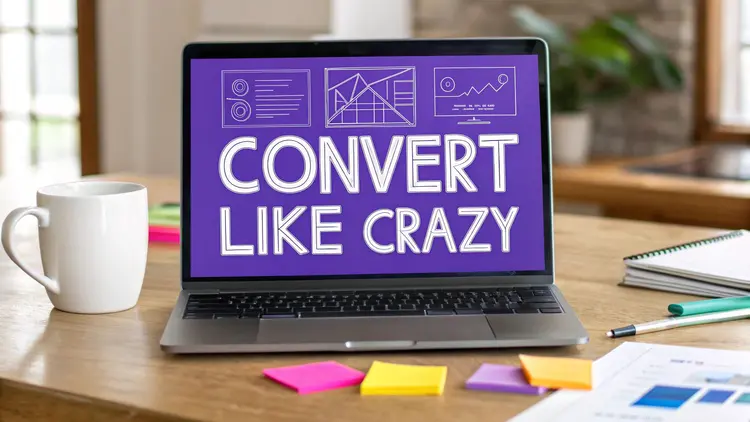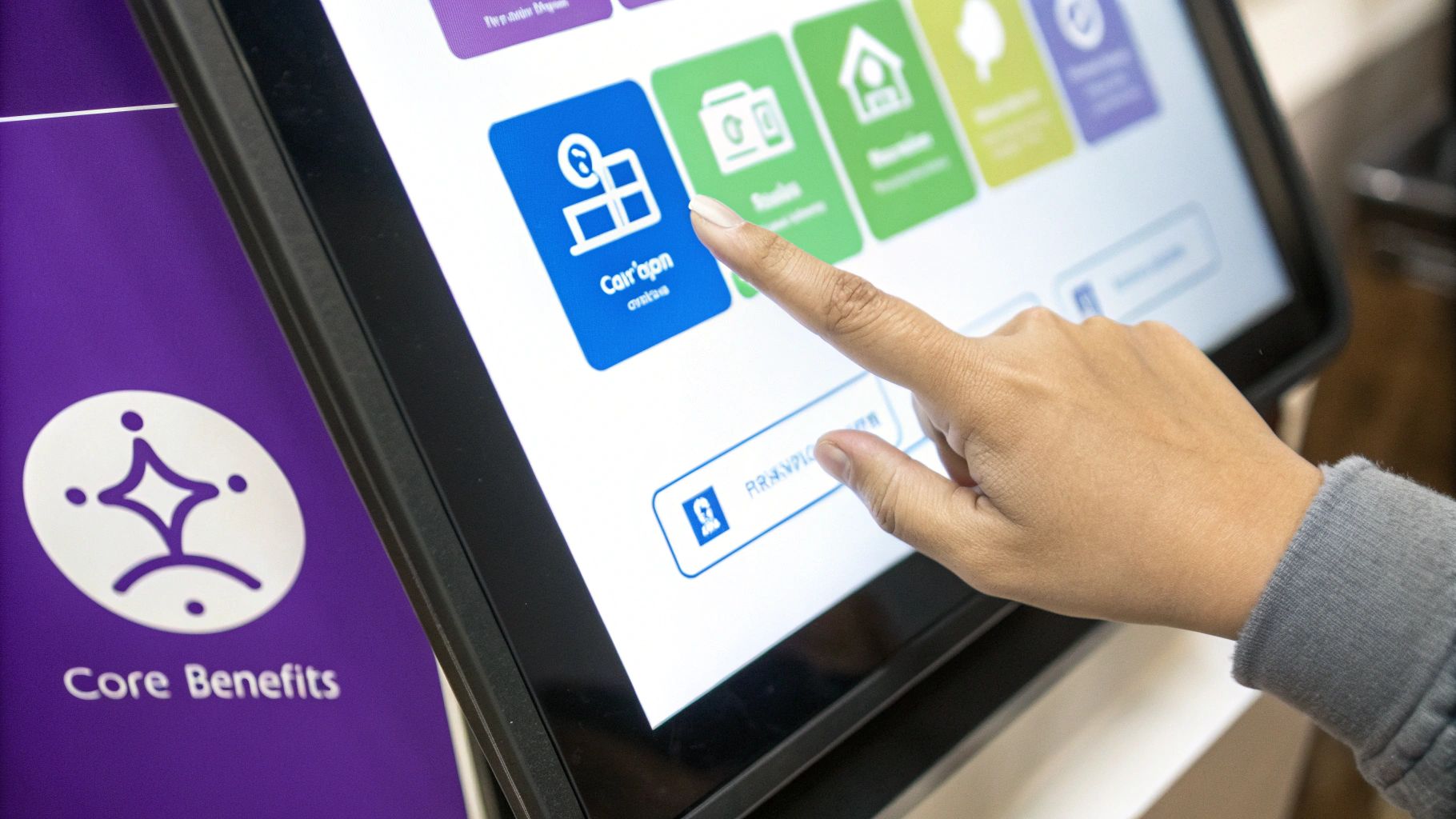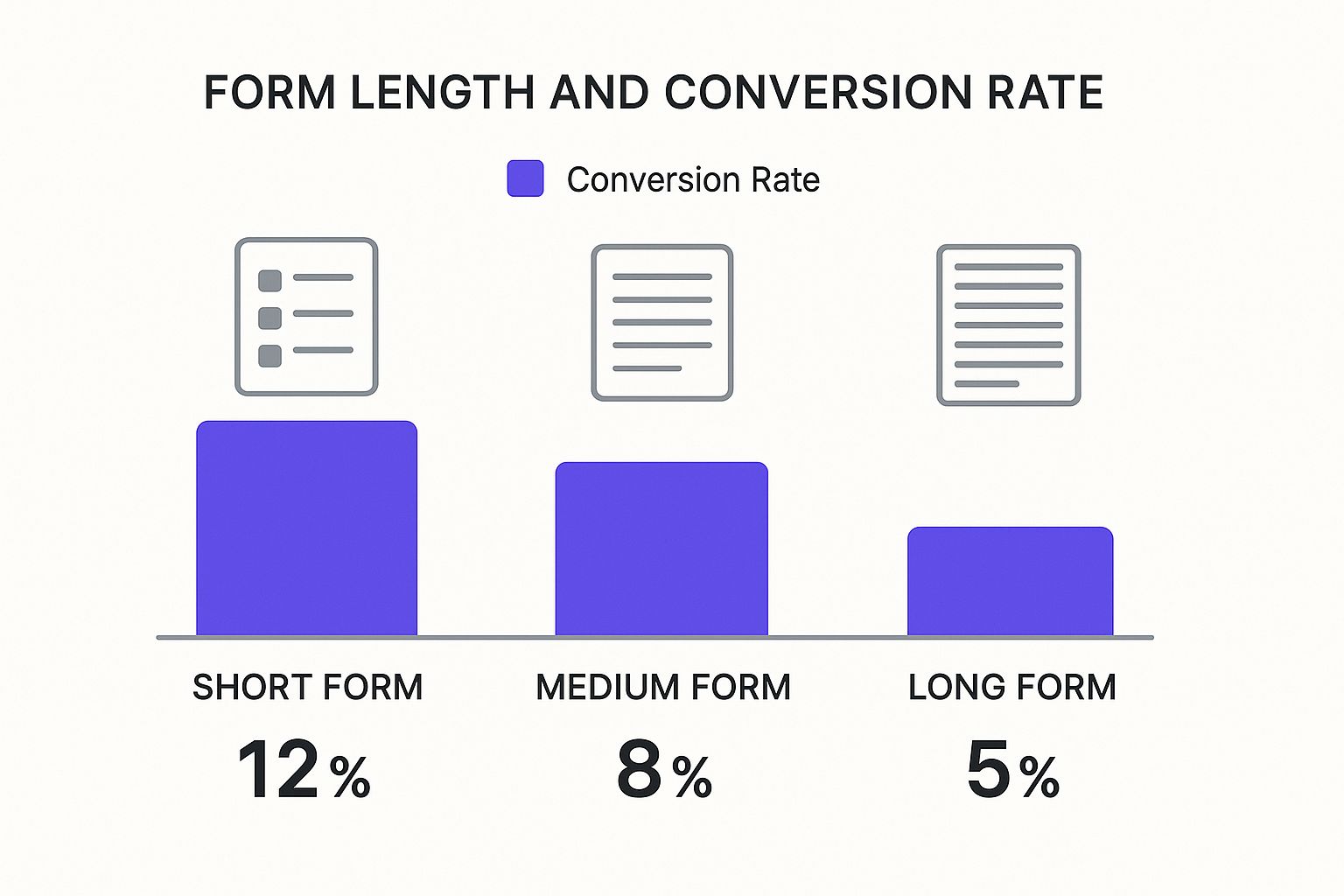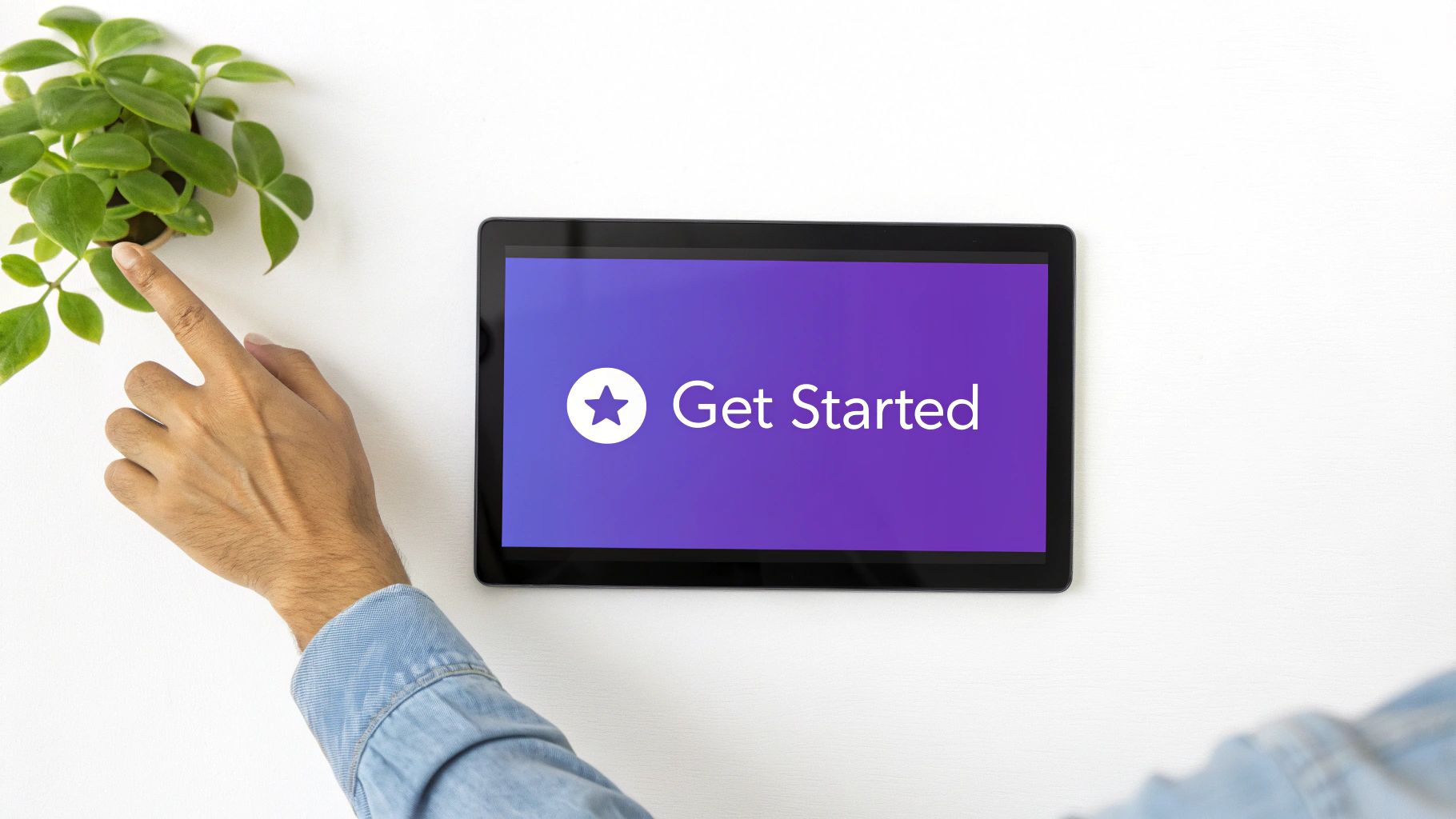Build Landing Pages That Convert Like Crazy


Let's be frank, most lead gen landing pages are desolate. People land, glance around, then poof! Gone. I've witnessed this countless times, pouring over campaigns and collaborating with agencies pulling in six-figure results. The secret sauce? It's not just about dazzling design or clever wording, though those help. It's about grasping that precise moment when a visitor decides to share their email – a valuable piece of themselves.
This means understanding the psychology behind conversions. Why do people happily complete forms for some companies but bounce from others? Think about a time you gave up your email. What motivated you? A great offer? Trust in the brand? FOMO (fear of missing out)? These are the emotional triggers that truly get people to act.
Talking with conversion experts and analyzing split-test data from top-performing campaigns, I've pinpointed the core ingredients of effective lead gen landing pages. The magic happens when a page doesn't just collect emails, it attracts qualified leads – people who actually want to hear from you. For example, consider a landing page for a free webinar. Instead of just offering access, showcase the specific problems the webinar addresses and the concrete benefits attendees will get. This draws in people actively searching for solutions, leading to more engagement and, ultimately, conversions.
Lead generation is a big investment. In 2025, 50% of marketers still see lead generation as a top priority, with businesses generating an average of 1,877 leads per month. But getting those leads comes with a price tag, averaging $198.44 per lead across industries. This highlights the importance of optimizing your landing page to get the biggest bang for your buck. More insights on lead generation statistics can be found here.
Clarity is also key. Your landing page should instantly convey its purpose and value. It's like a first impression – you wouldn't ramble in a meeting. You'd state your purpose and what you offer. Your landing page should do the same. A concise headline, strong visuals, and a clear call to action are crucial for grabbing attention and guiding visitors toward converting.
Finally, build trust. People hesitate to share information, especially with brands they don't know. Add testimonials, social proof, security badges, and a clear privacy policy to ease concerns and build confidence. Focusing on these psychological elements can turn your landing page from a ghost town into a magnet for qualified leads. It's not about tricks; it's about genuine connection and delivering real value. That’s how you build landing pages that truly work.
Research That Sets You Up For Landing Page Success

I've seen too many marketers get caught up in the design of their lead gen landing pages before they even really know their audience. They're all about how it looks, not how it works. It's like building a house without a blueprint—sure, it might be pretty, but is it going to stand up? The marketers who are really seeing results? They spend way more time researching than they do designing.
And I’m not just talking basic demographics. This is about getting into the heads of your prospects and understanding what makes them tick. What are their pain points? What are their biggest challenges? What are they hoping to achieve? These are the golden nuggets that will make your lead gen landing pages truly effective.
Understanding Your Ideal Customer
Customer interviews are a game-changer. Don't just ask what they want—dig deeper. Uncover their frustrations, their aspirations, what's holding them back. For example, I worked with a SaaS company targeting small business owners. Their initial landing page focused on features, but after interviewing customers, we realized the biggest driver was saving time. Refocusing the copy around that emotional trigger? Conversions went through the roof.
Another key piece is mapping the customer journey. Understand how your prospects go from recognizing a problem to looking for a solution. Where do they go for information? What objections do they have? Knowing these touchpoints lets you tailor your lead gen landing page to meet their needs at each stage of the process.
Competitive Intelligence That Matters
Research also means knowing your competition. Don't just look at their landing pages; look at their entire marketing strategy. What are they doing right? Where are they falling short? Are there any gaps you can fill? This helps you position your offer and stand out from the crowd.
I remember analyzing a competitor's landing page for a client. They were all about capturing leads, but their value proposition was weak. This gave my client the opportunity to really showcase their unique benefits, which led to a much more compelling landing page and—you guessed it—better leads.
Crafting a Compelling Value Proposition
Finally, use your research to build a rock-solid value proposition. This is the heart of your message—why should anyone care about what you're offering? It needs to be clear, concise, and instantly resonate with your target audience. Think of it as your elevator pitch: you’ve got seconds to grab their attention. This research-driven approach ensures your lead gen landing page isn’t just eye-catching, but truly effective at capturing qualified leads and driving real business results. It’s the foundation for everything else – design, copy, and testing.
Visual Psychology That Guides Visitors to Convert

The infographic above shows some interesting data about form length on lead generation landing pages. It compares short (3 fields), medium (5 fields), and long (7 fields) forms. Shorter forms definitely win. A concise 3-field form gets a 12% conversion rate. Add two more fields, and conversions drop to 8%. Seven fields? You're down to 5%. Less really is more when it comes to forms.
Think of your landing page design as a roadmap. It guides visitors to your ultimate goal – a completed form. Everything matters: element placement, color choices, even the amount of white space. These details shape the user experience and influence actions.
The Power of Visual Hierarchy
Visual hierarchy is all about prioritizing. What should visitors see first? Your headline? That crucial call to action? Use size, color, and contrast to highlight these key elements. Think about what catches your eye when you walk into a room. It's usually the biggest, brightest, or most unusual thing. Your landing page is no different.
Let’s talk about color.
Color Psychology and Its Impact
Color evokes a powerful emotional response. Red creates urgency, blue builds trust, and green suggests growth. But these are just general guidelines. Think about your specific audience. What resonates with them? I once had a client who insisted on a bright orange call-to-action button. It clashed horribly. We switched to a more subtle blue, and click-through rates jumped 15%. A valuable lesson learned!
Don't forget about breathing room.
White Space – Breathing Room for Conversions
White space is not wasted space. It’s crucial for readability and clarity. It gives the eye a break and prevents a cluttered feel. Think of it like the pauses in a conversation, letting the message sink in. Too much information all at once can overwhelm visitors and send them running.
Let’s look at design in a mobile-first world.
Mobile-First Design – More Than Just Responsiveness
Most people browse on mobile devices now. Mobile-first design is essential. Your page needs to be designed for mobile, not just resized. Prioritize key information, use large, tappable buttons and forms, and ensure fast loading speeds. A slow mobile page can kill conversions faster than a bad headline.
Subtle cues can make a big difference.
Directional Cues – Guiding the Eye
Subtle cues, like arrows or images of people looking at your form, can gently guide visitors. They work subconsciously, directing attention where you want it. Think of them as strategically placed signs along a path, ensuring no one gets lost.
To help visualize these best practices, here’s a handy table:
Essential Design Elements Comparison A comparison of high-converting vs low-converting landing page design elements with performance metrics
Design Element | High-Converting Approach | Low-Converting Approach | Impact on Conversion |
|---|---|---|---|
Form Length | Short (3-5 fields) | Long (7+ fields) | Shorter forms see significantly higher conversion rates (e.g., 12% vs 5%) |
Visual Hierarchy | Clear hierarchy using size, color, contrast to emphasize key elements | No clear visual hierarchy, important elements blend in | Impacts user focus and guides them towards conversion |
Color Psychology | Colors aligned with brand and target audience emotions | Colors clash with design or evoke negative emotions | Influences user perception and can significantly impact click-through rates |
White Space | Ample white space for readability and visual clarity | Cluttered design with minimal white space | Impacts user experience and can lead to higher bounce rates |
Mobile-First Design | Designed for mobile experience first, prioritizing essential information and usability | Simply resized desktop version, poor mobile usability | Critically impacts mobile conversions due to poor user experience |
Directional Cues | Subtle cues like arrows or images guide users towards call to action | No directional cues, users might miss key elements | Improves user flow and directs attention towards conversion points |
This table summarizes the key design elements and their impact on conversions. It highlights the differences between high-performing and low-performing approaches.
By using these visual psychology principles, you can transform your landing page. You can create a persuasive experience that motivates visitors to take action. Every design choice should have a purpose, contributing to a cohesive and compelling user journey that ultimately boosts conversions.
Writing Copy That Turns Skeptics Into Subscribers
Let's be honest, nobody likes being sold to. Great landing page copy understands this. It's not about aggressively pushing a product; it's about persuasion. It's about creating a connection with your audience and showing them how you can solve their problems. The best landing pages I've built felt more like a helpful chat than a sales pitch.
The Psychology of Persuasion
Think about headlines for a second. Their job is to stop the scroll – to grab attention in a crowded online world. A bland headline like "Get Your Free eBook" simply won't cut it. But something specific, something that speaks directly to a pain point, like "Stop Wasting Time on Tedious Tasks – Automate Your Workflow With This Free Guide," well, that's a different story. And once you have their attention, your subheadings need to keep that momentum going, guiding the reader down the page and reinforcing the benefits.
Remember, it's always benefits over features. People care about what your product does for them, not the technical specs. Instead of "Our software has advanced analytics," try "Make Data-Driven Decisions That Boost Your Bottom Line With Powerful, Easy-to-Use Analytics." See how that reframes the value?
Social Proof and Urgency – Used Authentically
Social proof is like word-of-mouth marketing on steroids. It builds trust and credibility. Instead of generic testimonials, show me the receipts! "Increased conversions by 20%" is far more impactful than "Great product!" Weave social proof naturally into your narrative. Mention case studies, talk about client successes, or even just highlight the number of people who've already downloaded your resource.
Urgency can be a powerful tool, but only if it's genuine. A limited-time offer is one thing, but a fake countdown timer just feels sleazy. Instead, focus on the real cost of inaction. What are they missing out on by not opting in? Focus on the true value you're providing. Consider this: 97% of people ignore cold calls. Content marketing, on the other hand, is used by 76% of marketers for lead generation. And social media? 68% find success there. More on these lead generation stats here.
Advanced Copywriting Techniques
The problem-agitation-solution (PAS) framework is a classic for a reason. It works. Identify a problem your audience faces, agitate that problem by highlighting the negative consequences, and then present your offer as the solution. Simple, yet effective. Example: "Struggling to manage your social media? It's costing you leads and brand visibility. Our platform automates your social presence and helps you attract more customers."
Storytelling is another powerful technique. Share a story of how your product helped someone overcome a similar challenge. Stories connect with people on an emotional level, making your message stick.
Calls to Action That Convert
Your call to action (CTA) should be the natural next step, not a pushy sales tactic. "Download Now," "Get Started Today," or "Claim Your Free Trial" are all clear and effective. And don’t forget to optimize your forms. Shorter forms generally convert better. Only ask for essential information. Every extra field is another potential barrier to entry.
By mastering these copywriting techniques, you can create landing pages that truly resonate with your audience, building trust and turning skeptical visitors into enthusiastic subscribers. It's all about conversation, value, and making the path to conversion feel natural and effortless.
Building Landing Page Campaigns That Scale

A single high-converting lead gen landing page is great, but a whole collection of them? Now that’s a powerful lead generation engine. The best marketers I know don’t just build one-off pages; they build interconnected campaigns that capture leads throughout the entire buyer's journey. Think of it as a strategic fishing trip, using different lures (landing pages) to attract different kinds of fish (customer segments).
Targeting With Landing Page Families
Successful companies leverage landing page families to target specific audience segments, traffic sources, and offers simultaneously. For instance, a SaaS company might have one lead gen landing page for a free trial, another for a webinar, and yet another for a downloadable guide. Each page has a distinct purpose and caters to a particular audience need, enabling highly targeted messaging and drastically improving conversion potential.
Let's take professional speakers as an example. Sure, a speaker could create a generic landing page for all their talks. But think about the impact of a dedicated lead gen landing page for each presentation, complete with customized resources and follow-up materials. That’s how you achieve real scale. Plus, individual landing pages can be optimized for specific traffic channels. A page designed for organic search will likely have different keywords and copy than one designed for a paid ad campaign.
Strategic Segmentation For Personalized Experiences
Instead of a generic, one-size-fits-all approach, top companies are segmenting their audience and personalizing the lead gen landing page experience. They use data from website analytics, CRM systems like Salesforce, and other sources to understand visitor origins and interests. This allows them to tailor the landing page content, offer, and call to action to each specific segment. Imagine a visitor clicking a social media ad about a particular product feature. They'd land on a page specifically highlighting that feature and offering a related lead magnet.
This personalized approach can greatly influence conversion rates. It’s like having a one-on-one conversation instead of shouting into a void. Increasing your number of landing pages can drastically boost lead generation. In fact, increasing your pages from 10 to 15 can lead to a 55% increase in leads. That speaks volumes about the importance of targeted campaigns. You can find more landing page statistics here.
Efficiently Managing Multiple Landing Pages
As your landing page collection grows, efficient management becomes essential. A systematic approach lets you experiment without spreading your resources too thin. Invest in the right tools and workflows to manage version control, track performance, and simplify updates. Think project management software, landing page builders with A/B testing, and CRM systems – they’re all helpful for managing a growing campaign. It’s like building a well-organized library; you need a system to categorize, find, and update each book (landing page).
Maintaining Brand Consistency While Allowing for Variation
Brand consistency across your landing pages is vital for building trust and brand recognition. However, you also need strategic variations to maximize performance for different audiences. A clear brand style guide outlining logo usage, color palette, and typography is essential. Within those guidelines, you can create variations in imagery, copy, and offer to resonate with specific segments. Think of it like making variations of a favorite recipe; you keep the core ingredients but add unique spices to suit individual tastes. By building a family of tailored lead gen landing pages, not just individual pages, you’ll create a lead generation engine that consistently fuels business growth.
Testing Strategies That Deliver Breakthrough Results
So, you’ve launched your lead generation landing page. Great! But now, how do you make it a conversion machine? This is where a lot of folks get stuck. They start tweaking random things, hoping for a magic bullet. Instead of guessing, let's get strategic. Real optimization comes from smart testing grounded in solid principles.
Identifying High-Impact Elements
First, figure out what to test. Concentrate on the elements that pack the biggest punch. I’m talking headlines, calls to action, and form fields. Don’t get lost in the weeds tweaking minor design details before nailing the core stuff. It's like fiddling with your car’s paint job when the engine’s sputtering! A slight color change on a button might make a small difference. But rewriting your headline to speak directly to a customer's pain point? Now that can move the needle.
Meaningful Split Testing for Actionable Insights
A/B testing, also known as split testing, is your secret weapon. Create two versions of your landing page with one key difference, then let them battle it out. The winner gives you clear, actionable data. For example, let's say you test two headlines: "Get Your Free Guide" vs. "Unlock the Secrets to Landing Page Success." If the second one wins, you know your audience responds to benefit-driven language. Key takeaway? Test one element at a time! Changing too many things makes it impossible to know what actually worked.
Multivariate Testing – When and How to Use It
Multivariate testing? Think A/B testing on steroids. You test multiple elements simultaneously to find the ultimate winning combination. It’s powerful stuff, but also more complex. Don't jump into this until you've got a good understanding of your baseline performance through A/B testing. It’s like fine-tuning a race car engine—you need a solid base to build on.
Analyzing Real-World Campaigns
I’ve seen tiny tweaks lead to massive wins. For one client selling online courses, we changed the call to action from "Enroll Now" to "Start Learning Today." Conversions jumped by 18%! Just two words. For another client, we trimmed their form from seven fields down to three. Boom! A 30% increase in conversions. These examples show the power of small, psychology-driven changes.
Speaking of real-world results, LinkedIn’s lead generation features are a game-changer, especially in B2B. LinkedIn Lead Gen Forms boast an average conversion rate of 13%, which blows the average landing page conversion rate of 2.35% out of the water.
Let's take a look at some industry benchmarks to give you a sense of where you stand:
Landing Page Performance Benchmarks
Industry | Average Conversion Rate | Top Performer Rate | Primary Success Factors |
|---|---|---|---|
B2B Software | 2.5% | 7% | Clear value proposition, strong CTA, short forms |
E-commerce | 2.8% | 8% | High-quality product images, compelling offers, social proof |
Financial Services | 5% | 12% | Trust signals, clear benefits, strong security assurances |
This table gives you a general idea of average and top-performing conversion rates. Remember, these are just benchmarks. Your actual results will vary based on your industry, target audience, and offer.
The key takeaway here is to focus on the success factors. By implementing best practices, you can significantly improve your conversion rates and achieve results closer to the top performers.
Advanced Analysis Techniques
Don’t stop at basic conversion rates. Dive deeper with tools like heatmaps to see where people click and scroll. User session recordings let you watch visitors interact with your content. And conversion funnel analysis pinpoints where people drop off. These tools can reveal hidden problems. For example, a high drop-off rate on your form might signal a problem with the form fields or a confusing offer. Hotjar is a popular tool that combines heatmaps, session recordings, and conversion funnel analysis.
Interpreting Test Results and Making Data-Driven Decisions
Testing is a marathon, not a sprint. Don’t expect miracles overnight. Analyze your results, make informed changes, and keep testing. This continuous improvement cycle, driven by real data, is what ultimately delivers lasting results. Small gains add up over time. It's like building a muscle – consistent effort pays off big. By mastering these testing strategies, you'll move from guessing to knowing, building lead generation landing pages that consistently deliver exceptional results.
Measuring What Matters and Planning Your Next Wins
Conversion rates. Everyone talks about them, right? They’re often presented as the metric for landing page success. But honestly, I've found they can be a bit of a red herring. Focusing only on conversion rates can actually hold you back. The most successful marketers I know look beyond those surface-level numbers. They dig deeper and track the metrics that truly correlate with business growth.
Take a look at this screenshot from Google Analytics. It’s a typical traffic sources report for a lead generation landing page. See how it breaks down where your visitors are coming from? Organic search, paid ads, social media—it’s all there.
And notice how the conversion rates vary between sources. You might see a ton of traffic from paid ads, but maybe your organic search is bringing in higher-quality leads. The kind of people who stick around and actually become paying customers. That kind of insight is gold when you’re deciding where to focus your marketing efforts.
Building a Comprehensive Measurement Framework
What it really comes down to is creating a system that connects your landing page performance to your bottom line. We're talking revenue and customer lifetime value. Instead of just counting leads, start thinking about their quality. How many of those leads convert into paying customers? How much do those customers spend over time? Those metrics tell a much more powerful story than simple conversion rates.
Tracking Systems That Reveal Quality, Not Just Quantity
Your tracking setup should tell you which traffic sources and campaigns are bringing in the best leads, not just the highest volume. This means going beyond basic Google Analytics. Think about integrating your CRM, your marketing automation platform, and any other tools that can give you a 360-degree view of your customer journey.
Actionable Insights for Optimization and Planning
I've found that well-designed dashboards are absolutely essential here. They take all that raw data and turn it into actionable insights. I’ve seen marketers build dashboards that track all sorts of things, from cost per lead by source to customer lifetime value by campaign. With that kind of information at your fingertips, you can make informed decisions about where to invest your time and resources.
Advanced Attribution Models for Understanding the Customer Journey
Don't forget about attribution models. These are crucial for understanding the often-complex customer journey. It’s rarely a simple straight line from first click to conversion. Maybe someone clicks on your ad, then visits your website organically a week later, and then finally fills out a form on your landing page. Understanding these touchpoints is key to optimizing your entire marketing funnel.
Reporting That Demonstrates Business Value
Finally, you need to be able to communicate these insights to stakeholders. Don’t just show them numbers—tell them a story. Show them how your landing page is directly contributing to real business growth. This is how you demonstrate the value of your work and secure buy-in for future projects.
This is about so much more than basic conversion rate optimization. It's about building a sustainable lead generation engine that delivers real, measurable results. By tracking the right metrics and using them to inform your strategy, you'll position yourself for long-term success. It's about understanding the why behind the numbers, not just the numbers themselves.
Ready to transform your presentations into high-performing lead capture moments? Check out SpeakerStacks, the SaaS platform designed to help speakers like you generate leads, book meetings, and drive measurable ROI.